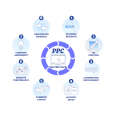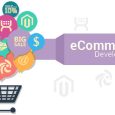Nobody enjoys having to wait for a website to load. Your site’s search engine rankings and total traffic would most likely suffer because of its slowness. Take our word for it: 47% of customers expect a web page to load in two seconds or less. Another interesting fact is that 40% of people leave a website that takes longer than three seconds to load. A website’s site speed is an important factor. As a digital marketing firm, here are some suggestions we have for you to improve your site’s results.
1. Compress Images
Optimizing your photos is one of the most important things you can do to increase site speed. Websites and the overall output of the site rely heavily on images. They not only liven up the website, but they also boost user interaction.
However, if your site is full of large, unoptimized images, they can degrade the output of your site. Compressing images is the method of reducing the file size of an image using a plugin or other program. Smush is one of the best WordPress image optimization plugins. When you upload photos to the media library, this plugin will compress them automatically. This plugin can also be used to compress all of the photos already in your media library. TinyJPG can be used instead of a plugin if you don’t want to use one. Simply drop your images into the “Drop your.png or.jpg files here!” prompt and let the website handle the compression.
One more thing to consider is image file types. The two main types you will be using are PNGs and JPEGs.
- PNG – These are usually larger in file size but are higher quality. These should be primarily used for graphics
- JPEG – These are smaller in file size when compared with PNGs. JPEGs should be used for photographs
Choosing the correct format for your images can also have an impact on site performance
2. Combine CSS and JS
The number of HTTP requests increases with each CSS and JS file on your web. CSS determines the page’s styling, while Javascript (JS) determines the page’s dynamic and interactive elements. Your website’s loading speed will be affected by the number of HTTP requests it receives. The number of HTTP requests your site makes will be reduced if you combine your JS and CSS files into a couple of files.
One thing to keep in mind when optimizing your site is that merging a lot of files into one file will cause your site to crash. This is particularly true in the case of JavaScript. To avoid this problem, I recommend setting up a staging site first or merging files slowly. After that, measure the output of your website by combining a few files. If all is in order, you will continue to optimize.
3. Do a Plugin Audit
Plugins are great for expanding the functionality of your WordPress site or adding new features. Many plugins, on the other hand, can load photos, JS files, and CSS files. – of these files represents an HTTP request, and the more HTTP requests you have, the slower your site will load.
Examine each of your plugins. There will almost certainly be some plugins that you do not need. There will also be some plugins mounted that you just failed to uninstall.
4. Use a Caching Plugin
You send a request to a server any time you visit a website. This server then sends the webpage to your browser, complete with all of the necessary files, photos, and elements. Your site would almost certainly provide the same content to users month after month. Installing a caching plugin instructs the server to recall and copy previously served material. Your website’s efficiency and load speed would improve dramatically if all of these files and assets are delivered from cache.
5. Update PHP
Zealth Healthtech is a web development company in Noida and you can contact us to find out what version of PHP your site is running. We will do a complete website audit using our internal checklist and then come with a tailored made solution for you.




